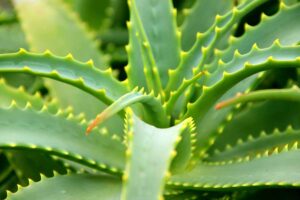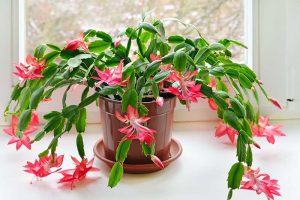While often cherished for its ornamental value, this remarkable plant holds more uses up its sleeve.
Yucca is a versatile source of food, providing a bounty of edible goodness beyond its breathtaking blooms and hardy succulent leaves.
This plant can add a unique and flavorful touch to your plate, making it a standout addition to any culinary repertoire.
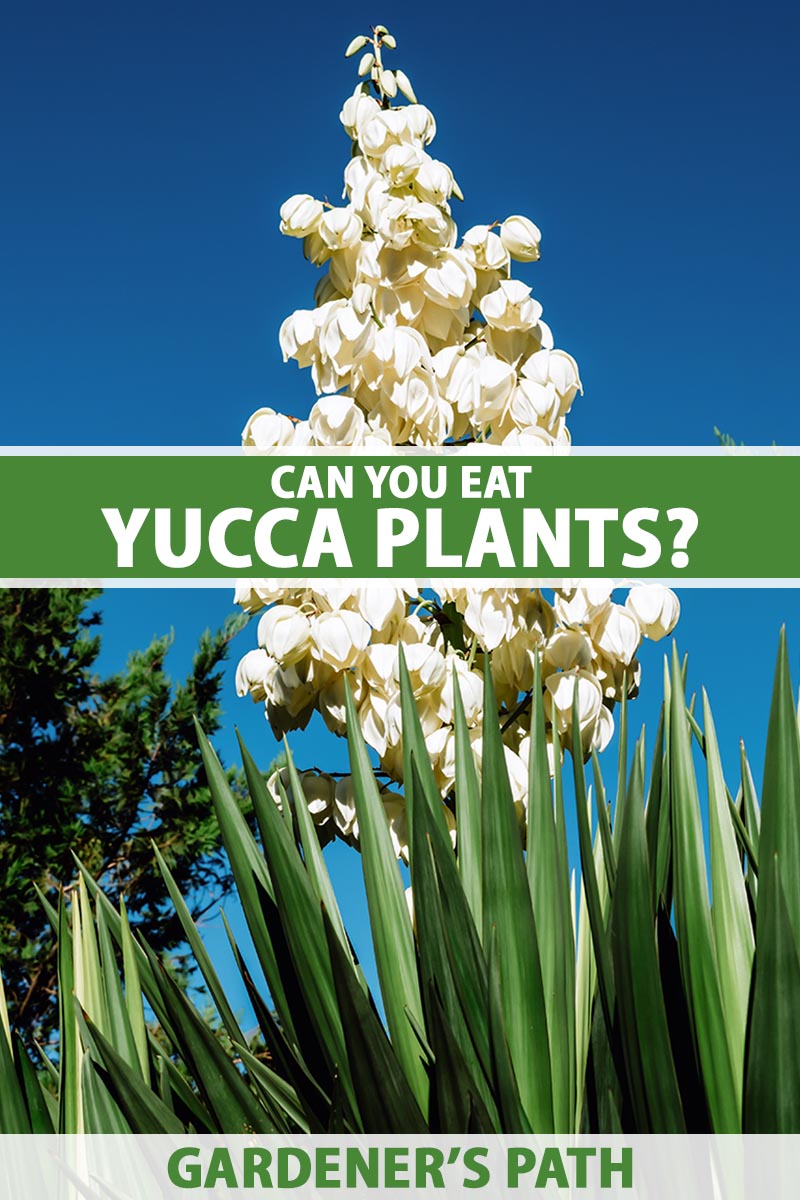
In the world of survivalism, the yucca plant has long been hailed as a reliable source of sustenance, often referred to as a “survival grocery store plant” in online communities and forums.
But is there more to this plant than being a mere survivalist’s food? Can it be intentionally grown and cultivated as food?
The answer is a resounding yes! But there may be more to the story, that we will get into that below.
And where is the proof, you might ask? Well, this plant is no stranger to the American southwest and Mexico, where it is frequently embraced in local cuisine.
Its distinctive flavor and culinary versatility make it a beloved ingredient in these areas.
In this article, we will discuss which parts are edible, explore different ways it can be prepared and consumed, go over the harvest requirements for edible parts, shed light on the nutritional value this resilient desert plant has to offer, and finally, address whether you should grow this plant as an intentional food crop.
Interested in growing this spiky plant? Learn more about how to grow and care for yucca plants in our guide.
Ready to explore the diverse culinary world of yucca, where flowers, fruits, stems, leaves, and seeds can provide an array of flavors and textures?
Get your tableware ready, and we’ll chat more about the culinary possibilities!
What You’ll Learn
Yucca vs. Yuca
Yucca and yuca, despite their similar-sounding names, are two distinct plants with important differences.
Yucca refers to a genus of plants belonging to the Agavaceae family, known for their ornamental qualities and often used in landscaping and xeriscaping due to their ability to withstand arid conditions.
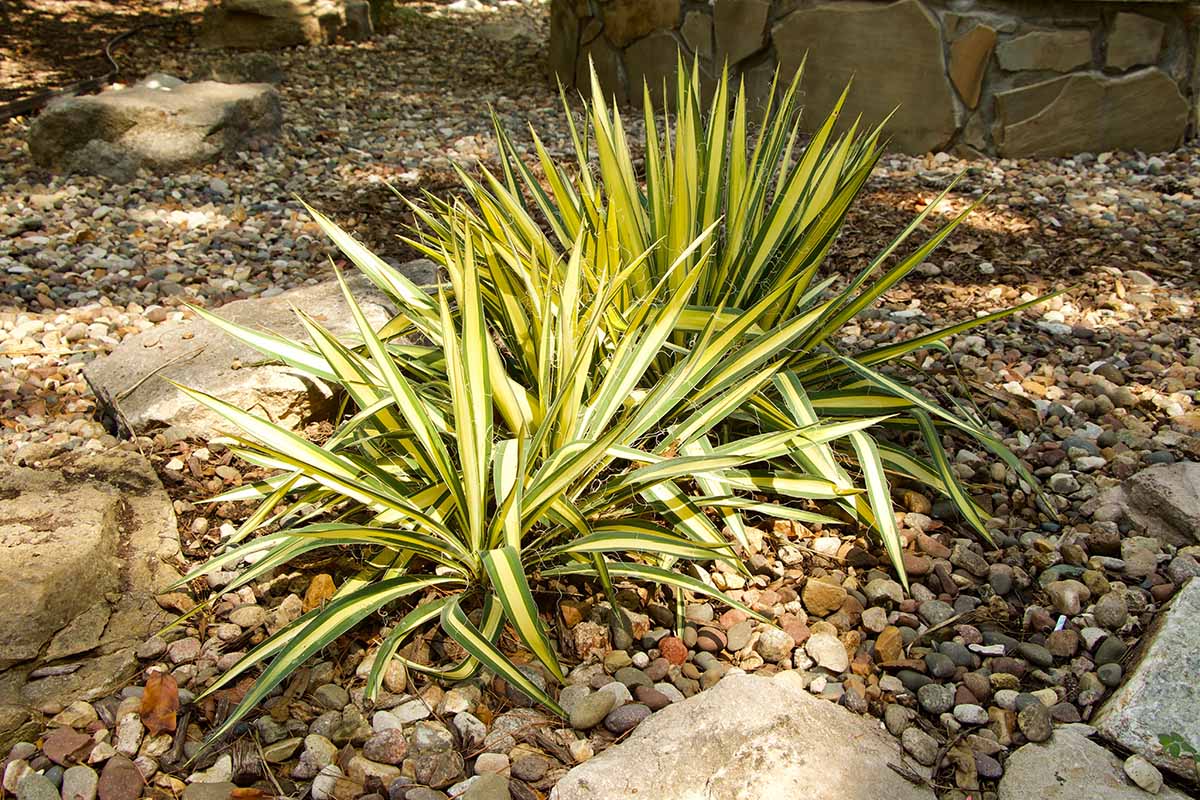
These plants are highly valued for their architectural beauty and are commonly found in gardens, providing dramatic focal points with their unique shapes and occasional blooming flowers.
They typically feature stiff and long, sharp-pointed leaves and stalks that radiate from a central base, forming a rosette shape, while often producing tall, striking flower stalks.
Some species have historical and cultural significance among indigenous communities, being utilized for medicinal purposes, fiber production, and even as a source of soap or shampoo.
On the other hand, yuca, also known as cassava (Manihot esculenta), is a starchy root vegetable that serves as a dietary staple in many tropical regions and belongs to the Euphorbiaceae family.
In contrast to yucca, yuca plants have large, tuberous roots that resemble elongated potatoes.
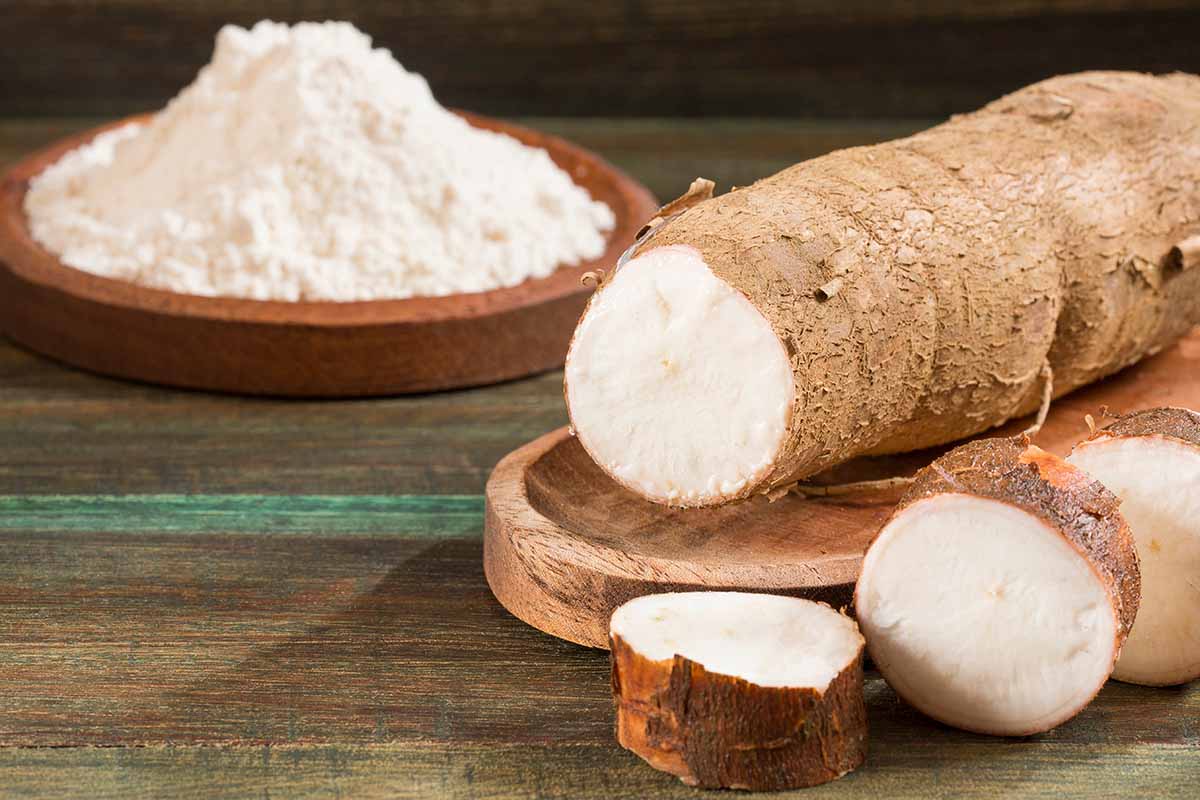
These roots are the edible part of the plant and are utilized in various culinary preparations.
Yuca, or cassava, holds tremendous culinary importance in many parts of the world, particularly in tropical regions of Africa, Asia, and South America.
The roots of yuca are rich in carbohydrates and are commonly used to produce tapioca starch. This starch is widely recognized and commonly used in various culinary applications as a thickener.
Yuca can be prepared in various ways, including boiling, frying, or grinding it into flour for use in bread, cakes, and other traditional dishes.
Despite their differences, it’s worth noting that the similar-sounding names have led to occasional confusion, particularly in regions where both plants are common.
However, it’s important to recognize that yucca plants are not only admired for their ornamental value but can also be featured in foods. That’s what we will be discussing today!
Species to Cultivate for Food
There are several varieties that stand out for their edible parts, offering new opportunities for adventurous food enthusiasts.

Yucca baccata, Y. gloriosa, Y. filamentosa, Y. glauca, Y. harrimaniae, Y. brevifolia, Y. schidigera, Y. elata, Y. treculeana, Y. angustissima, Y. pallida, and Y. aloifolia are just a few examples of species recognized for their edible components.
And there are plenty more where those came from! Just be sure to do your research before harvesting any typically ornamental plant from the garden for edible or medicinal use.
Learn more about various species of yucca in our roundup. You can also learn more about the various species and which parts of yucca are edible in the Plants for a Future database.
It’s important to keep in mind that different species may lend themselves better to certain preparations than others.
Each species possesses its own unique flavor, texture, and characteristics. So, don’t be afraid to experiment (safely!), consult with experts, and discover your own favorite ways to enjoy these plants.
Edible Parts
Yucca plants offer several edible parts, including seeds, fruits, leaf bases, flowers, emerging tender stalks, and sometimes, depending on the species, the roots.
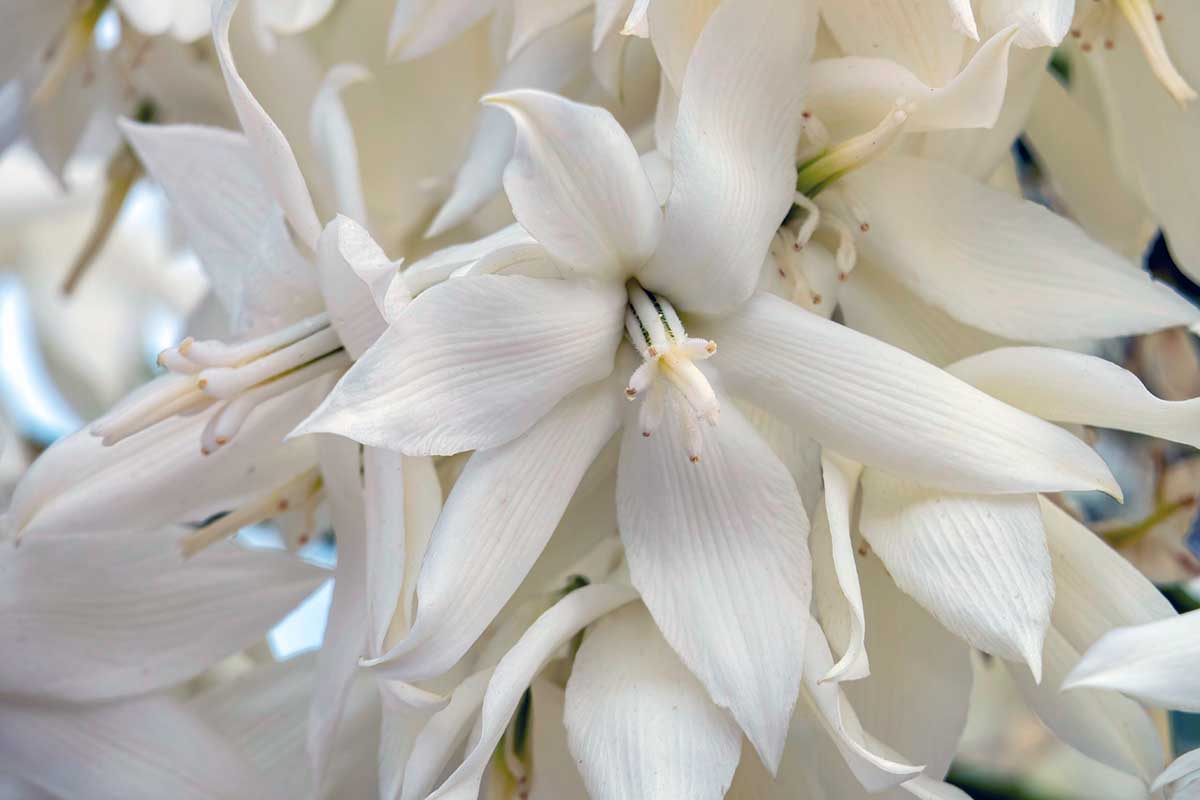
These edible parts provide a range of flavors and culinary possibilities.
Want to know how and when these should be harvested for the best taste? Next, we will learn more about the best practices and timing.
Harvesting Times
Again, note that all of the following may vary depending on the species.
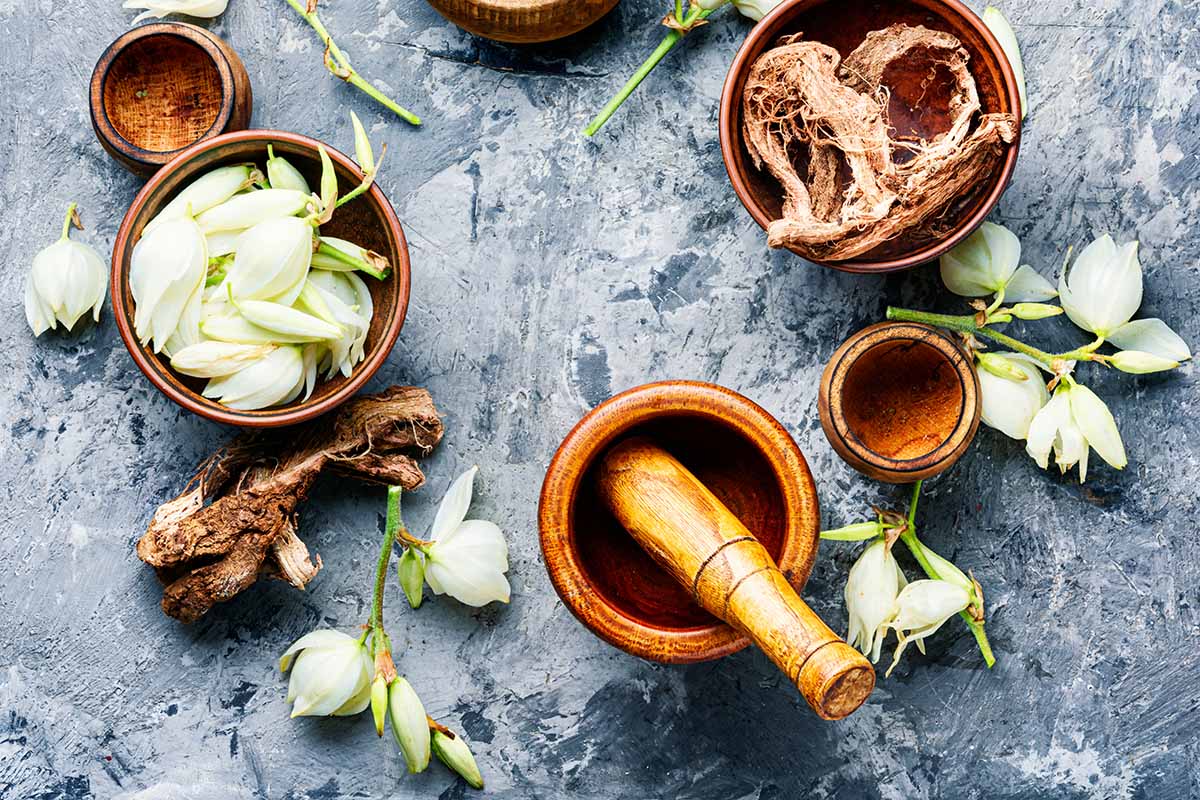
Picking the flowers at the right time is crucial for the best flavor. As the blooms age, they can turn bitter, so it’s recommended to enjoy the flowers within the first two to three days after they open.
The freshly picked flowers usually have a mild, sweet taste akin to asparagus or artichokes. Before harvesting a large number of the flowers, it’s a good idea to taste the petals of one flower to ensure they aren’t too bitter.
Harvest the seeds when they have fully ripened and turned a dark brown or black color. This usually occurs when the seed pods have dried and begun to split open, exposing the mature seeds inside.
It’s best to harvest tender stems before plants bloom to avoid fibrousness and a loss of flavor. These stalks can be cooked or enjoyed raw while they retain their tenderness.
When it comes to the older stems of the plants, it’s important to exercise caution.
Many species have stems that contain natural toxins called saponins and proper preparation is required to remove them. To make the stems safe for consumption, they may be boiled or roasted to break down the toxins.
The fruits are typically harvested when they are fully mature but before they have reached their peak ripeness. Harvest the fruits carefully to avoid damage and to ensure optimal flavor.
Certain species have edible leaf bases that can be harvested. These should be gathered when they are young and tender, usually before the leaves have fully developed.
Preparation Options
Delicate yucca flowers can be eaten raw or dried and crushed, providing a burst of unique flavor. Petals are sweetest, while others parts may be bitter.
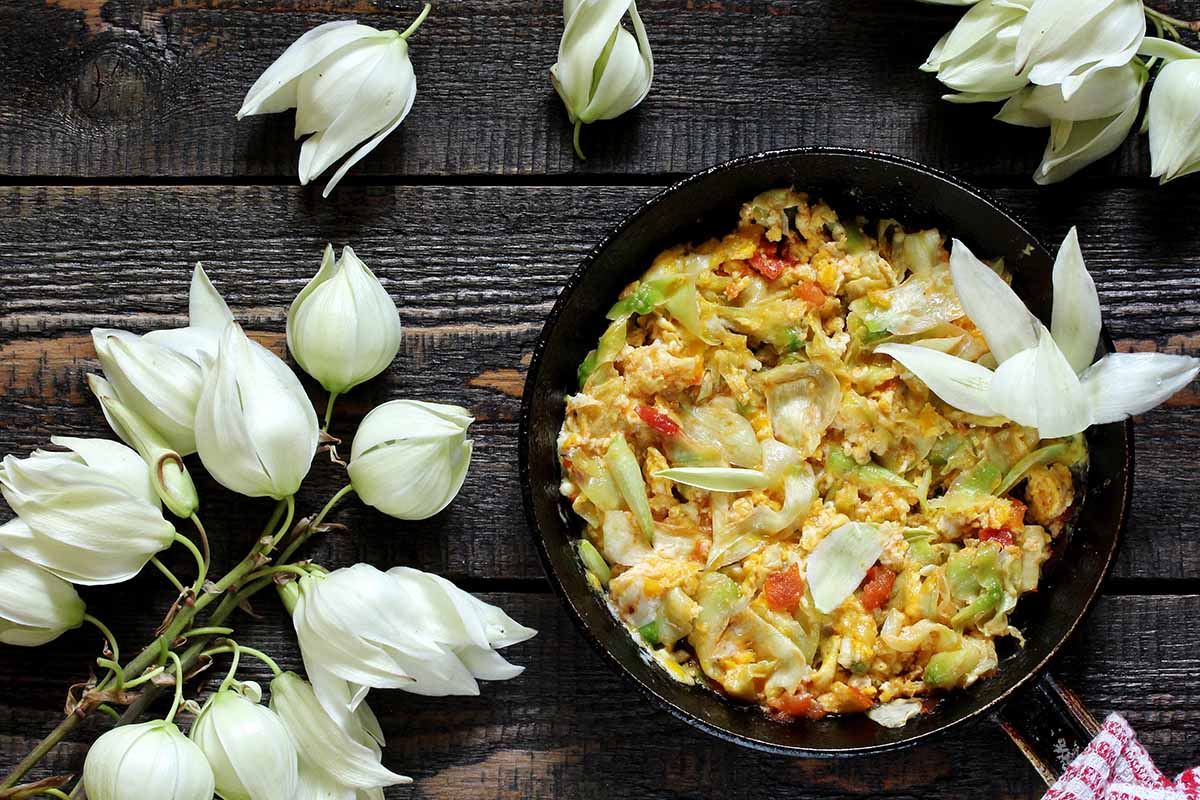
They serve as a delightful addition to jellies, drinks, or candies, infusing them with sweetness. Whether boiled, fried, sauteed, or even baked, these flowers bring an exquisite touch to your culinary accomplishments.
Moving on to the luscious fruits, they offer a wide range of options. Enjoy them raw or cooked in soups and stews, relishing their natural sweetness and juiciness.
These fruits can be transformed into delectable jellies, baked and dried for versatile use, or simply enjoyed as a nutritious snack.
Now, let’s explore the tender stems of young flowering yucca.
Chopped and cooked like asparagus, they provide a satisfying crunch and mild flavor. For a unique experience, try baking them, creating a sweet potato-like sensation that surprises your taste buds.
The tender bases of the leaves also offer a wealth of possibilities. Boiled, steamed, sauteed, or incorporated into soups, stews, or stir-fries, these can add nutrition and flavor to meals.
Cooking times may vary depending on your desired tenderness, so let your culinary intuition guide you to the perfect texture.
Last but not least, the seeds may serve as versatile ingredients.
They can be ground into flour, roasted for delightful snacks, pan-fried for added crunch, or boiled for various culinary applications. The seeds offer a unique taste and texture that can enhance both sweet and savory dishes.
Let your imagination run wild as you incorporate these ingredients into your culinary creations, elevating your dishes with the remarkable attributes of yucca.
Nutrition
You can eat yucca and not feel a bit of guilt about discovering this nutritional powerhouse!
Bursting with essential vitamins and minerals, this remarkable plant has an abundance of health benefits.
This plant boasts high levels of vitamins A and C as well as B-complex vitamins, providing a natural boost to your immune system and overall well-being.

What else sets this succulent apart? Its impressive fiber and potassium content, surpassing that of a potato.
Fiber is a key component of a healthy diet, aiding in digestion and promoting satiety, while potassium plays a vital role in maintaining proper heart and muscle function.
But that’s not all – the plant is also packed with calcium, phosphorus, and iron, essential minerals that support bone health, muscle function, and blood circulation.
With yucca, you can enjoy a nutrient-rich option that not only excites your taste buds but also nourishes your body from within.
So, embrace the remarkable benefits and elevate your nutritional intake! Who’s hungry?
Should You Cultivate Your Own Food Crop?
Yucca can indeed be a viable food source. But the question remains: Would you want to intentionally grow and cultivate this plant as a dedicated food crop?

The answer is not a simple yes or no; it’s a matter of considering various factors.
While it can be grown for food, it’s essential to acknowledge that in regions where it is commonly cultivated, there are often other more suitable and nutrient-rich food crops available that are preferred for cultivation and consumption.
These alternatives tend to offer higher yields, better taste, and superior nutritional profiles.
If there is ample availability of other crops that adequately fulfill dietary needs, the focus may naturally shift away from cultivating this plant specifically for food.
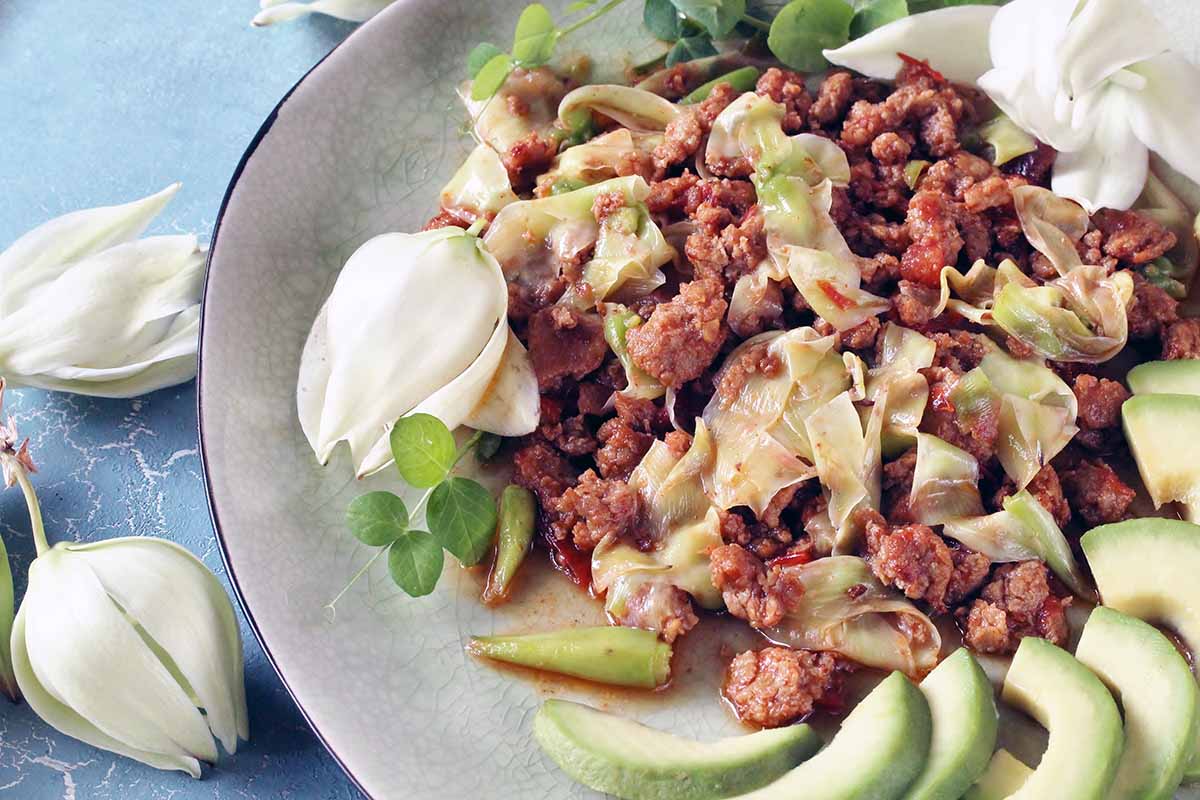
However, there are circumstances where intentionally growing it for food can still be a viable option. In areas with limited access to diverse food crops, cultivation may serve as a valuable source of sustenance.
Additionally, in regions where it holds cultural significance in traditional cuisine, cultivating yucca can help to preserve culinary heritage and provide unique flavors and culinary diversity.
Furthermore, for individuals seeking culinary adventure, growing this plant for its distinctive characteristics can be a worthwhile pursuit.
Ultimately, the decision to grow yucca as a food crop is a personal one, influenced by factors such as local agricultural practices, dietary preferences, and the availability of other suitable foods.
The choice is yours if you want to take on yucca cultivation for your food wants and needs.
After sharing all of these wonderful uses, I say, why not? There’s nothing to lose!
Expand Your Palette
Exploring the world of yucca plants as a potential food source opens up exciting culinary possibilities.
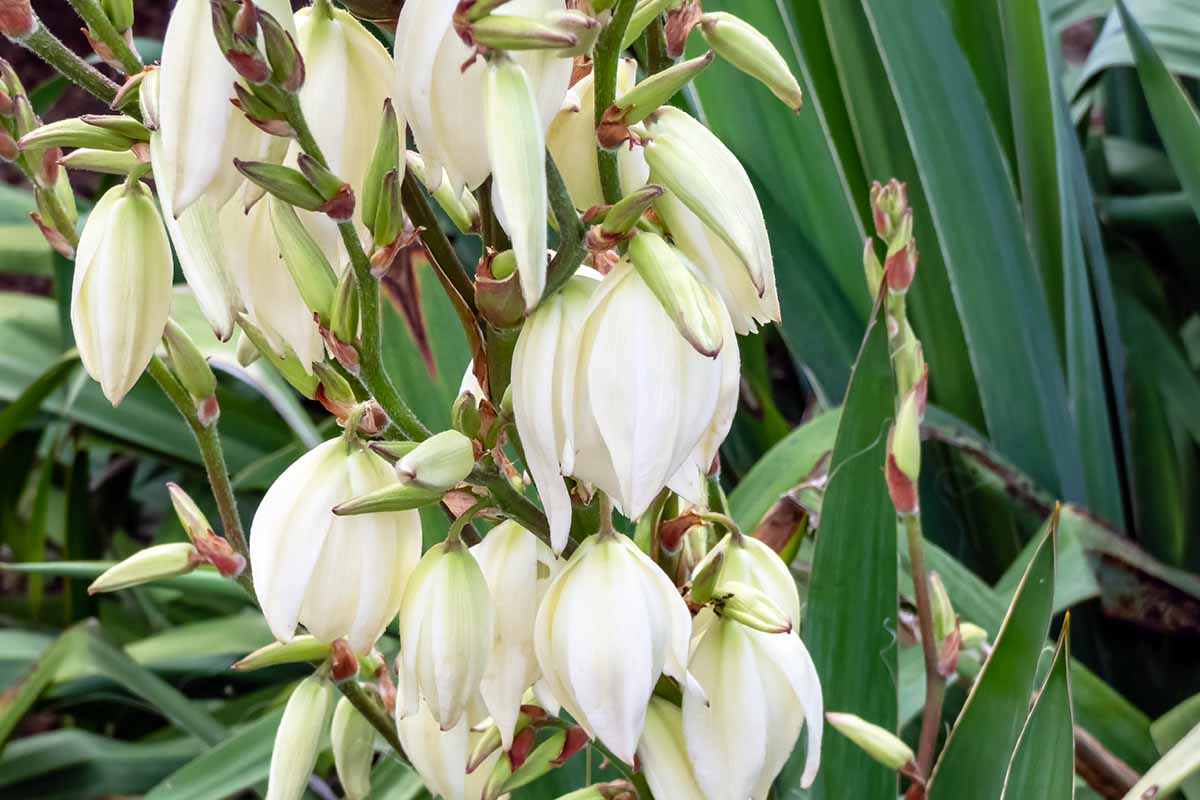
By understanding the distinctions between yucca and yuca, learning more about the edible parts, mastering harvest times and considering various preparations, and discovering the common edible species, you can start on a journey towards your very own cooking adventure!
Why not embrace the opportunity to try something new?
With yucca, you have the chance to expand your culinary horizons, excite your taste buds, and create extraordinary dishes that showcase the versatility of these remarkable plants.
Whether you’re a seasoned chef or an enthusiastic home cook, incorporating this succulent into your repertoire allows you to add a touch of novelty and surprise to your meals.
So go ahead, be bold, and savor the experience of cultivating and preparing yucca for food. Be sure to test any new foods in small quantities first, and be mindful of any allergies. Step outside your culinary comfort zone and embark on a flavorful voyage!
Have you ever experimented with unique homegrown ingredients like yucca? Or perhaps you’ve grown other ornamental plants that turned out to be surprisingly edible? We want to hear all about your experiences! Share your stories in the comments below.
Interested in learning more about growing yucca? Check out these articles next:

